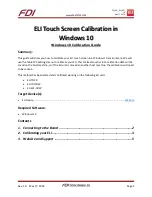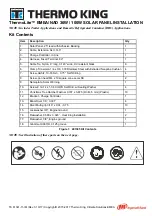
72
Distributed Audio Panel Manual —
P/N 52265:B1 6/8/2010
Section 6: Power Supply Calculations
6.1 Overview
This section contains instructions and tables for calculating power supply currents in alarm and
standby conditions. This is a four-step process, consisting of the following:
1. Calculating the total amount of AC branch circuit current required to operate the system
2. Calculating the power supply load current for non-fire and fire alarm conditions and
calculating the secondary (battery) load
3. Calculating the size of batteries required to support the system if an AC power loss occurs
4. Selecting the proper batteries for your system
6.2 Calculating the AC Branch Circuit
The audio distribution panel requires connection to a separate, dedicated AC branch circuit, which
must be labeled
FIRE ALARM
. This branch circuit must connect to the line side of the main
power feed of the protected premises. No other non-fire alarm equipment may be powered from
the fire alarm branch circuit. The branch circuit wire must run continuously, without any discon-
nect devices, from the power source to the transponder. Overcurrent protection for this circuit must
comply with Article 760 of the National Electrical Codes as well as local codes. Use 14 AWG
(2.00 mm
2
) wire with 600 volt insulation for this branch circuit.
The ACC-25/50DA & ACC-25/50DAZS require 1.57 amps from the AC branch circuit.
6.3 Calculating the System Current Draw
6.3.1 Overview
The secondary power source (batteries) must be able to power the system during a primary power
loss. To calculate the non-fire alarm load on the secondary power source, use Calculation
Column 1 in Table 6.2 . The ACC-25/50DA must support a larger load current during a fire alarm
condition and primary power loss. To calculate the fire alarm load on the secondary power source,
use Calculation Column 2 in Table 6.2 .
When calculating current draw and the battery size, note the following:
•
‘Primary’ indicates that the audio panel is being powered by AC.
•
‘Secondary’ indicates that the audio panel is being powered by battery backup during AC
failure.
•
All currents are given in amperes (A) and refer to the DC current being supplied by the panel.
Table 6.1 shows how to convert milliamperes and microamperes to full amperes.
To convert....
Multiply
Example
Milliamperes (mA) to
amperes (A)
mA x 0.001
3 mA x 0.001 = 0.003 A
Microamperes (µA) to
amperes (A)
µA x 0.000001
300 µA x 0.000001 = 0.0003 A
Table 6.1 Converting to Full Amperes













































